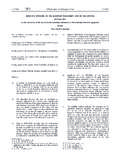Transcription of Introduction - Clinical Dynamics
1 Clinical Support8500 Creekside , OR 97008-7107 : 503-526-4200 Toll Free: BLOOD PRESSUREI ntroductionThis article provides a basic Introduction to non-invasive blood pressuremonitoring (NIBP), with reference to NIBP monitoring with a Propaq vital more information about the use of the Propaq monitor, refer to the PropaqDirections For HR/PR with the Propaq MonitorWhen monitoring a patient using ECG leads, SpO2, and/or CO2, the rate that isdisplayed is a true heart rate. If monitoring a patient using NIBP only, what isactually being displayed is the patient s pulse rate. This may be important whenassessing your patient s cardiac status because a patient s heart rate and pulserate may vary if there is any cardiac the Propaq monitor you can set the HR/PR tone loudness to LOW,MEDIUM, HIGH, or OFF.
2 This does not affect the tone of the alarm if a patientexceeds an alarm limit Oscillometric Method of MeasurementMost NIBP devices, including the Propaq monitor, use the oscillometric methodfor determining mean arterial pressure, systolic pressure and diastolic devices use a special blood pressure cuff that detects oscillations (ormovement) in the arterial walls that are created by cardiac contractions. Theseoscillations are then transmitted by the cuff hose to a microprocessor within theWelch allyn Protocol Clinical SupportNIBP2monitor that uses cuff pressure information as well as the oscillation amplitudesto determine the patient s blood of Cuff SizeIt is essential that you use a cuff that is properly sized for the patients armcircumference.
3 If you take a blood pressure with a cuff that is too small for thepatient s arm it will cause the NIBP monitor to read falsely high. Conversely, toolarge a cuff can lead to falsely low Heart Association Recommended Bladder Dimensionsfor Blood Pressure Cuffs According to Arm Circumference(Cuff Width = 40% of Arm Circumference)Upper ArmCircumferenceCuff NameBladder Width(cm)5 13 Infant531 20 Child824 32 Adult1332 42 Wide/large adult1742 50 Thigh20 Additional Recommendations Expel all air from the cuff before taking a measurement. Residual air canlead to inaccurate readings caused by a loose-fitting cuff. Apply cuff snugly around extremity, making sure you can put one fingerbeneath the cuff. Check the hose connections to both the cuff and the monitor.
4 Movement can impede NIBP readings. Therefore, instruct the patient tolie/sit still during the inflation of the cuff. CONFIRM the initial NIBP reading with a blood pressure reading takenby auscultation. Be sure to verify this reading on the same extremity. Do not place an NIBP cuff on the same extremity where an infusion line islocated because it will impede IV flow. Do not place an NIBP cuff on the same extremity where SpO2 is beingmonitored because it will interfere with the continuous monitoring ofpulse oximetry and cause the monitor to allyn Protocol Clinical SupportNIBP3 Do not place an NIBP cuff on an extremity with impaired circulation. It canlead to further compromise in patient s circulation if the cuff is inflated toohigh.
5 Excessive bodily movements of a patient s extremities can mimicoscillations or movement detected by the NIBP cuff and can lead toinaccurate readings. Very fast or irregular cardiac rhythms can cause the NIBP monitor to giveerroneous or no readings. The upper arm is the preferred site for the placement of the cuff. Theforearm and ankle can also be used. If a large adult cuff does not fit theupper arm adequately, use an alternate and Maintenance Most NIBP cuffs are designed for single use. Disposable cuffs should bedisposed of after use on a single patient, or if they become soiled. Washnon-disposable cuffs between patient use. Follow the manufacturer srecommendations. It is recommended to change the cuff site every four hours if bloodpressure is being monitored frequently.
6 You may use a thin layer ofgauze or stockinette between the cuff and the skin for patients who havefragile skin. Hang cables in dry designated area and store cuffs when not in Guyton, A. (1991). Textbook of Medical Physiology . Saunders , Loeb, S. (1993). Monitoring Clinical Functions. Advanced Corp. Springhouse, Thomas, C. Taber s Cyclopedic Medical Dictionary. 16th Edition. F. A. DavisCo. Philadelphia, PA. Flynn JM, Bruce NP. Introduction to Critical Care Skills. St. Louis, MO:Mosby; Metzgar ED, Polfus PM. A Study and Learning Tool: Health Assessment(Second Edition). Springhouse PA: Springhouse Corporation; allyn Protocol Clinical SupportNIBP46. Smith- Huddleston S, Ferguson SG. Critical Care and Emergency Nursing:2nd Edition.
7 Springhouse, PA: Springhouse Corporation; 1994.






